Day 70, 3 Inch Schiefspiegler Optics
I have a bunch of partially finished telescope projects. While organizing the shop, I ran across a box that I set aside a decade or more ago, labeled 3" Schiefspiegler Optics. Inside were some chunks of glass with a bit of a story...
First of all, what is a Schiefspiegler? It is an unusual design which was first described in detail in the 1950s by Anton Kutter in the October 1958 issue of Sky and Telescope, and later by Oscar Knab in a series of articles for Sky and Telescope and Issue 1 of Telescope Making Magazine. For a time, Sky and Telescope published a series of information called "Bulletin A" which described a great deal of the theory of the design.
Bulletin A, from Sky and Telescope
The basic idea of the Schiefpiegler is to make an entirely reflective telescope which is unobstructed: there is no secondary mirror in the light path like there are in conventional Newtonian or catadioptic designs like the Cassegrain, Schmidt-Cassegrain, or the Maksutov telescopes. It accomplishes this by tilting the primary so that the secondary mirror is outside the incoming light path. Kutter's work describes the mathematical legerdemain necessary to cancel out the aberrations that result from using these optical elements off axis.
Kutter's description from Bulletin A:
The Schiefspiegler is a reflecting telescope of high definition for visual and photographic work on the moon, the planets and double stars. By avoiding the additional diffraction effects on the spiders and secondaries or flats of all centric reflectors the original high definition of a long focus mirror is preserved in it.
In their simplest forms, a Schiefpiegler has two mirrors, both spherical, and both with relatively shallow curvature. With aperatures of around 4.5 inch or less and long focal rations, aberrations can be reduced to reasonable limits. The traditional 4.25" design (which I also have in my garage courtesy of a generous gift from Kevin Medlock, but perhaps that will make an appearance in a later episode my garage gems) has a focal ratio of around f/25 or higher, and excels at planetary views.
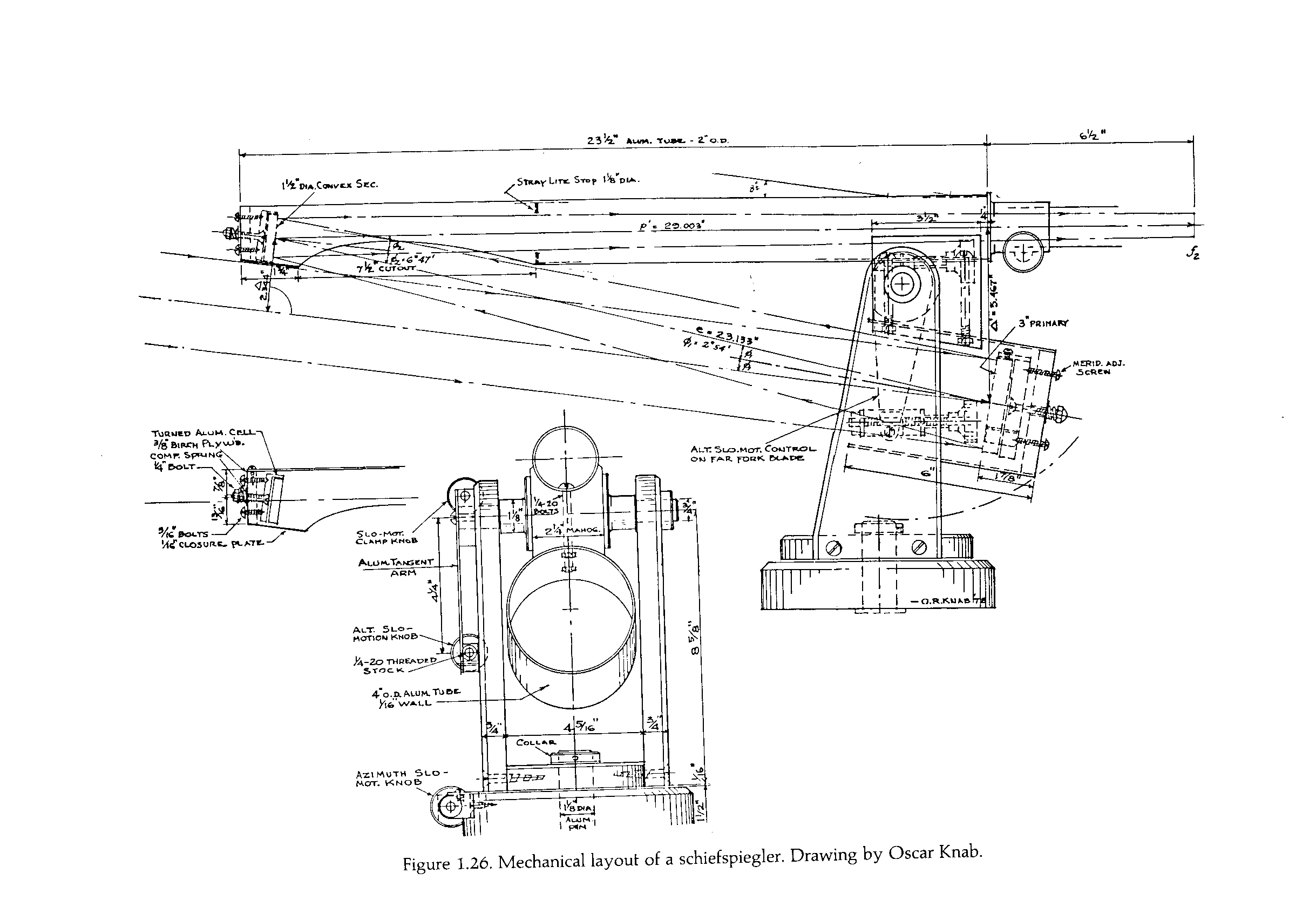
I ran across this box which I had set aside in 2021.
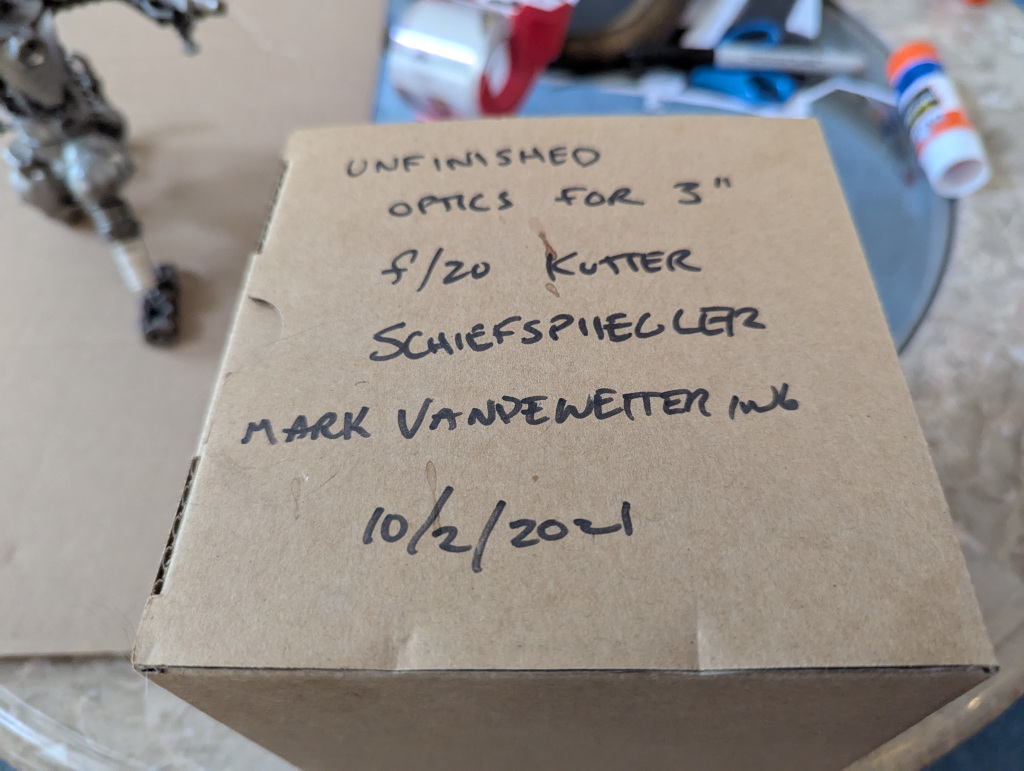
Inside was the optics. The thicker piece is a Pyrex blank that I ground and polished to as good a sphere as I could manage. I don't seem to have any notes as to what it looked like on the test stand. It has a radius of curvature of around 81" which makes the focal ratio of about f/13.5. The curve is very slight, about .01": it's kind of hard to see if it is curved at all.
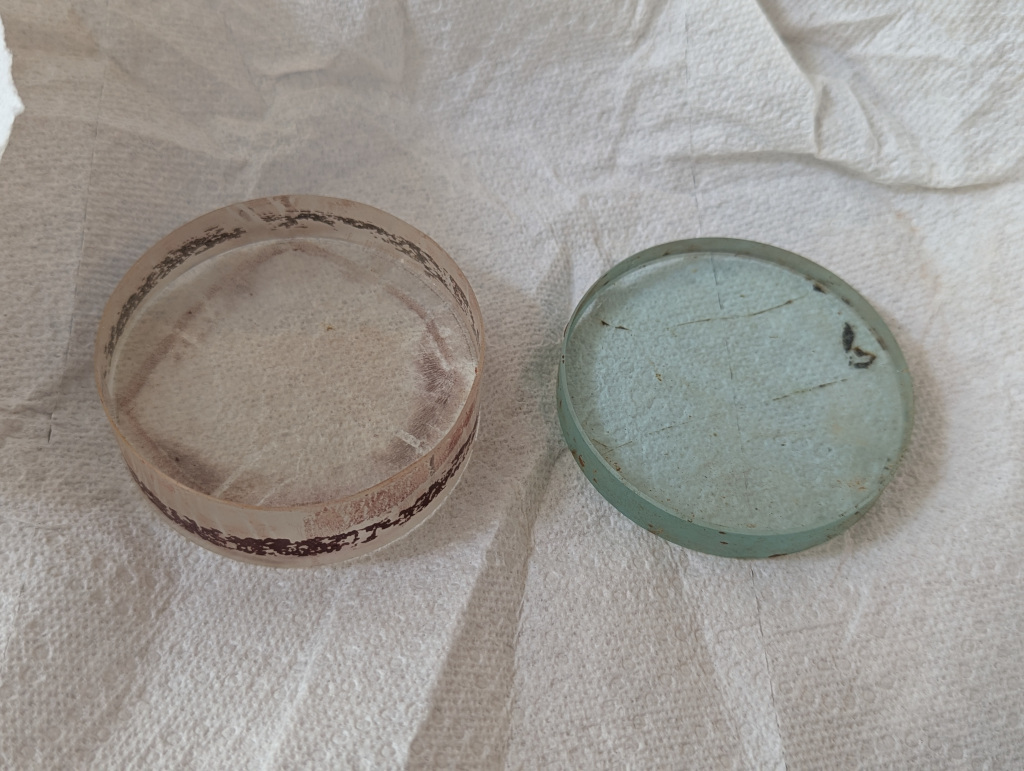
You can see red staining around the edge of the mirror. That is caused by polishing with optical rouge, which is pretty old school, and is known for slow polishing, and also for staining everything it comes in contact with.
To the right is a small piece of plate glass that I used as the backing for the polishing pitch lap. I had removed the pitch lap when I stored this project, and will need to make another one should I continue to work on it.
One of the interesting features of the Schiefpiegler is that both the concave primary and the convex secondary have the same radius of curvature, meaning that you can grind both at the same time: the traditional "tool" becomes the secondary. The secondary will be smaller than the primary though, so after rough grinding, you use a "biscuit cutter" to core the tool nearly all the way through the tool, and fill with plaster. You then can finish fine grinding. When you polish, you polish the concave primary as well as you can, and then set it aside, using a lap that you make on just the spare tool shown in the first picture. Then, you make a separate lap and press it to polish the convex secondary. You can then use interference testing to make them match, and when they do... well, you are done.
As you can see I never made it to that point. Frankly, since I don't seem to have my notes, I'm not sure how close I got. I used to have a good sodium vapor light source that is perflect for this kind of testing, but I loaned it out to someone and it was never returned.
You'll also notice that there is some significant damage on the backside of the secondary. This set apparently had some rough handling that caused it to break around the back edge. I don't think this will affect the secondary at all once it is done. This is why it got placed in a labeled cardboard box a couple of years ago.
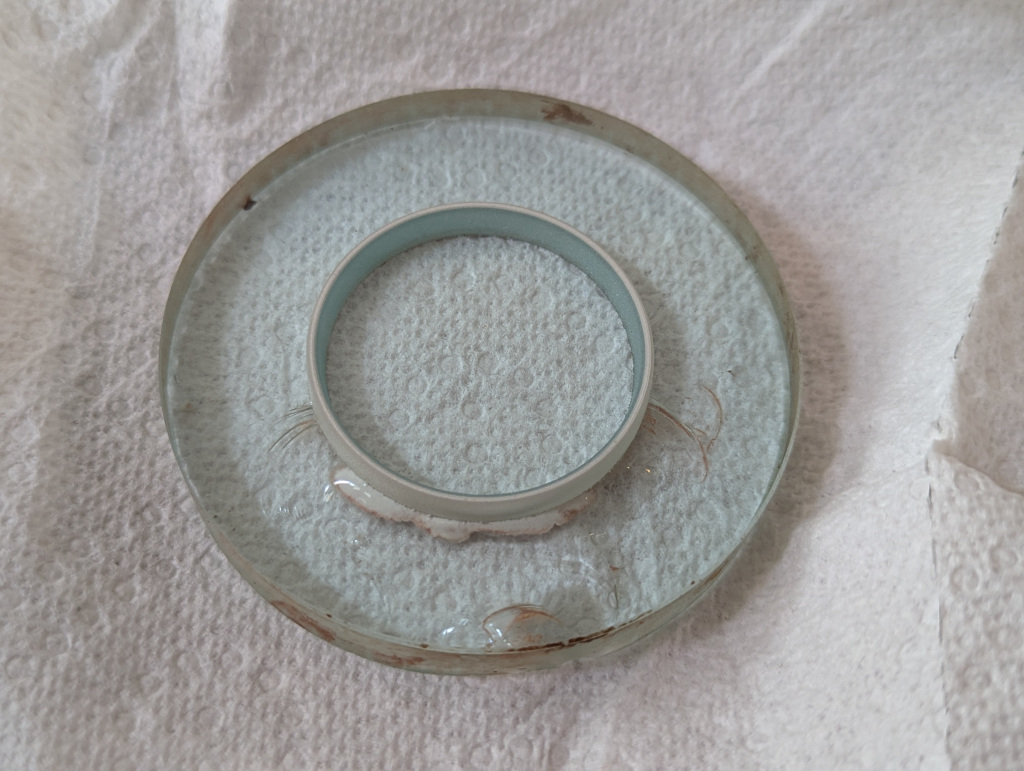

I was smart enough to set aside the "biscuit cutter" that I used to do the original cuts at least. I believe that Paul Zurakowsi (friend and director of the Chabot Workshop) made this for me back in the day.
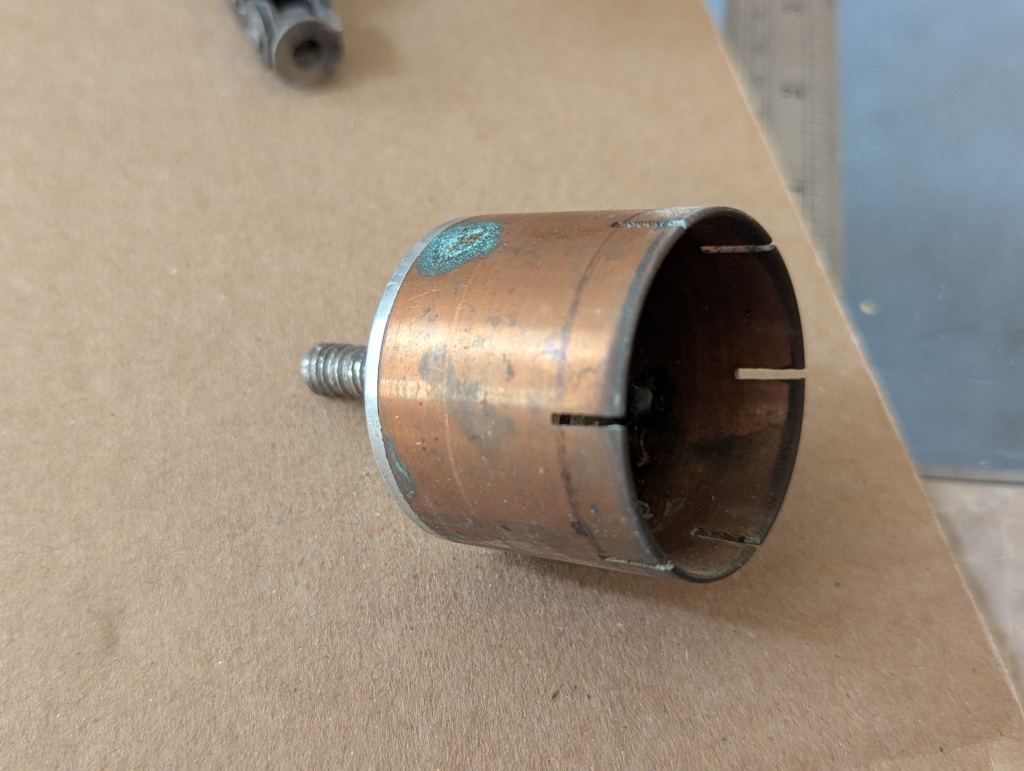
Anyway, it's an interesting project, and would make a cool small telescope when completed.
Hope you all are having a good Monday.